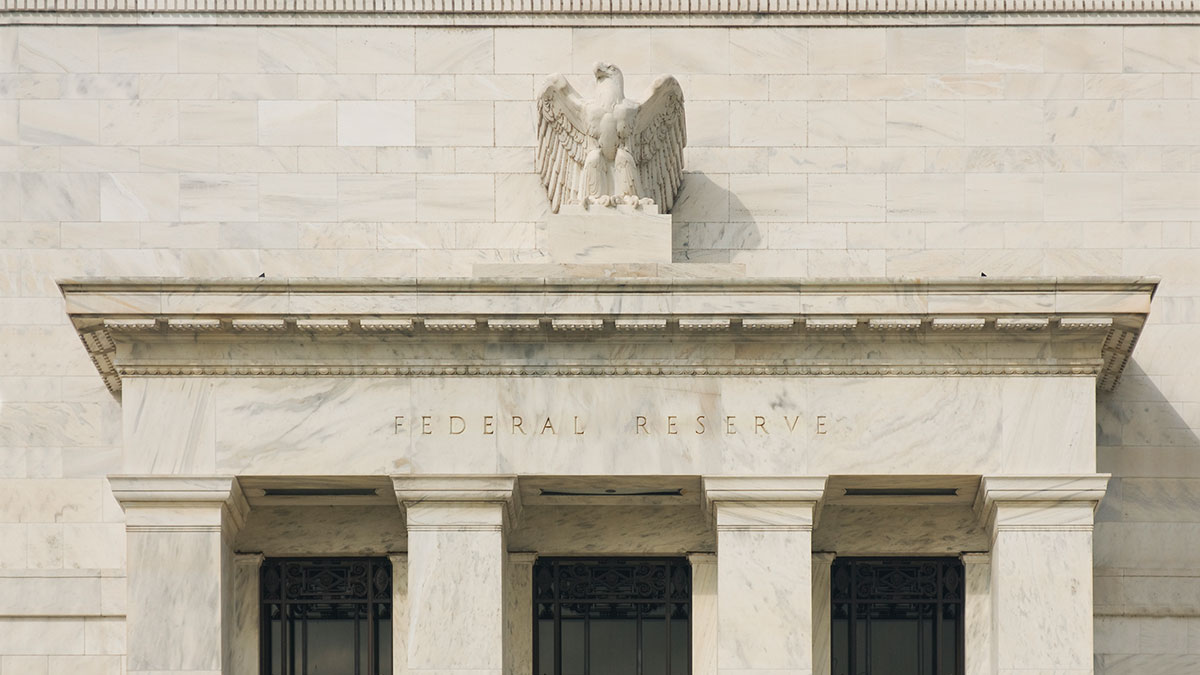
Key takeaways
The Federal Reserve increased interest rates by 0.25% to a range of 5.00% to 5.25% today in its ongoing attempt to cool inflation.
Some speculated the Fed would pause at this meeting given stresses in the banking sector. However, inflation and related labor and wage data remained strong enough to prompt an increase to the policy rate above 5.00%, up from near zero last year.
Fed guidance projects an unchanged year-end policy rate, although investors expect rate cuts and Fed Chairman Jerome Powell noted additional hikes remain possible based on incoming data.
The U.S. Federal Reserve (Fed) increased its target federal funds interest rate by 0.25% to a range of 5.00% to 5.25% following its regularly scheduled two-day meeting. Interest rate policy represents the primary tool the Fed uses to carry out its mandates of maximum employment, stable prices and moderate long-term interest rates. A strong labor market and positive wage gains are factors driving persistently elevated inflation, keeping the Fed on its tightening campaign despite stresses in the banking sector. Despite decelerating inflation, with the year-over-year Consumer Price Index down from a 40-year high of 9.1% last summer to 5.0% in March, the Fed continues to highlight price gains above its 2% target. The Fed’s most recent projections from March indicate an unchanged policy rate from today’s new level through year-end, while investors expect policy rate cuts of nearly 1.0% by January.
In addition to its mandates, the Fed must also consider financial stability in its policy calculus. Continued rate hikes could place additional strain on the financial system that some consider fragile despite functioning smoothly to date. The Federal Reserve acted in March to provide additional liquidity as some banks struggled amid higher deposit costs and lower bond and loan portfolio prices. The Fed must balance the inflation fight with support for financial market functioning.
The Fed adjusted language in its official statement from “the extent of further rate hikes” at its past meeting to “the extent to which additional policy firming may be necessary” Investors focused primarily on Fed Chairman Jerome Powell’s ensuing press conference comments, since the Fed made no updates to its economic projections. Powell stated, “tighter credit conditions are likely to weigh on economic activity, hiring and inflation,” which alludes to a possibility today’s rate hike may be the last in the rate hiking campaign. Powell also emphasized incoming data will ultimately determine whether to increase rates further.
The Fed continues to reduce its Treasury and mortgage bond holdings, which reached as much as $8.5 trillion during its attempt to suppress interest rates in response to the COVID pandemic. In addition to restraining post-pandemic bond yields and encouraging borrowing, the Fed’s bond buying also converted bonds held by market participants to cash, which can support economic activity through added liquidity. Starting last year, the Fed began allowing up to $95 billion per month to mature or “run off” its balance sheet, forcing investors to absorb the incremental supply. Bond portfolio runoff has the potential to nudge bond yields higher (which move in the opposite direction of bond prices) and dampen liquidity, in turn reducing a portion of the fuel available for future economic growth. Whenever Congress lifts the debt ceiling, the U.S. Treasury will likely issue significant new debt to replenish its dwindling cash balances used to fund normal government spending. Issuance of debt may further drain liquidity from the financial system as investors and financial institutions purchase government bonds with cash and that cash moves to the Treasury’s account. Lower liquidity has historically correlated to lower-than-average stock market returns.
Stock prices slipped today, relinquishing gains early in the trading session, and bond yields finished lower. The S&P 500 ended the day down 0.70%. Ten-year Treasury yields fell 0.06% to 3.36% (well below 2022 highs near 4.25%). The two-year Treasury yield fell 0.09% to 3.87%, with investors pricing in a slightly lower path of interest rates. The two-year yield remains below 2022 highs near 4.75%. Lower bond yields and interest rates reflect lower borrowing costs, which can fuel economic activity.
Monetary policy, defined as central bank interest rate target decisions, continues tightening around the globe as high food and energy prices begin spilling over into prices of other items, particularly services and wages. Investors expect an additional 0.75% of rate hikes from the European Central Bank (ECB) this year, along with 0.50% to 0.75% rate hikes from the Bank of England (BoE). Thus far in the second quarter, the total number of rate hikes minus the number of rate cuts remains elevated across the globe versus historical norms. Net global rate hikes (the number of central banks raising interest rates less those lowering rates) set consecutive quarterly records for magnitude and count during the first three quarters of 2022, with fourth quarter net hikes decelerating only slightly, according to U.S. Bank Asset Management Group calculations. First quarter 2023 net rate hikes decelerated somewhat, and second quarter net hikes remain on track to be elevated but to decelerate further versus last quarter. Consensus expectations indicate subdued global growth for upcoming quarters, though economists expect the global economy will narrowly avoid recession or experience only a mild contraction in activity. Recent global purchasing manager surveys indicate a considerable divergence between service activity (improving and now expanding) and goods manufacturing (contracting but modestly improving from recent levels) around the globe.
Most global stock and bond market indices are positive on the year after following a challenging 2022. Today’s Federal Reserve announcement complicates the outlook, since the need to tame inflation (suggesting additional rate hikes) conflicts with ensuring limited further strains on capital market activity that can stem from ongoing rate hikes. Our proprietary analysis suggests the path forward for consumer activity and corporate earnings may remain under pressure, and tighter financial conditions may exacerbate reduced consumer and business activity. We do expect capital markets to oscillate between cheering less inflationary data and reflecting concerns about potential slowdowns in consumer activity. We will keep you informed of our views as we progress forward through 2023.
As always, we value your trust and are here to help in any way we can. Please do not hesitate to let us know if we can help address your unique financial situation or be of assistance.
This information represents the opinion of U.S. Bank Wealth Management. The views are subject to change at any time based on market or other conditions and are current as of the date indicated on the materials. This is not intended to be a forecast of future events or guarantee of future results. It is not intended to provide specific advice or to be construed as an offering of securities or recommendation to invest. Not for use as a primary basis of investment decisions. Not to be construed to meet the needs of any particular investor. Not a representation or solicitation or an offer to sell/buy any security. Investors should consult with their investment professional for advice concerning their particular situation. The factual information provided has been obtained from sources believed to be reliable, but is not guaranteed as to accuracy or completeness. U.S. Bank is not affiliated or associated with any organizations mentioned.
The Consumer Price Index is a measure that examines the weighted average of prices of a basket of consumer goods and services, such as transportation, food and medical care. It is one of the most frequently used statistics for identifying periods of inflation or deflation.
Tags:
Related articles

Analysis: Assessing inflation’s impact
While the pace of rising inflation is slowing, persistently higher prices continue to weigh on consumers and policymakers alike.

Federal Reserve recalibrates monetary policy to fight inflation
With the Federal Reserve raising short-term interest rates and no longer providing liquidity to the bond market, investors should prepare for change as the Fed continues its fight against inflation.
